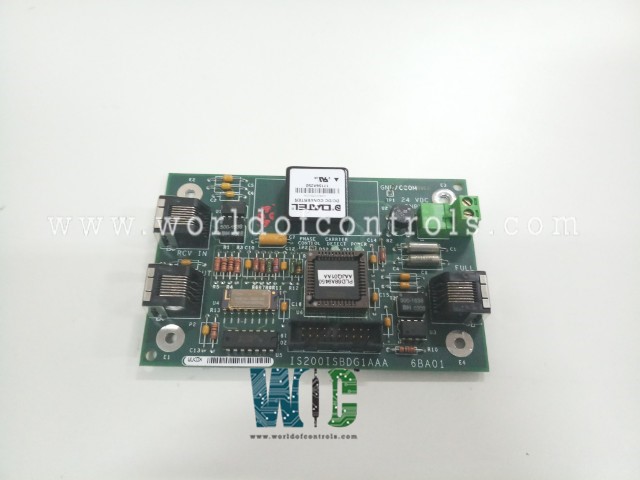
World Of Controls understands the criticality of your requirement and works towards reducing the lead time as much as possible.
IS200ISBDG1A - InSynchronous Bus Delay Module is available in stock which ships the same day.
IS200ISBDG1A - InSynchronous Bus Delay Module comes in UNUSED as well as REBUILT condition.
To avail our best deals for IS200ISBDG1A - InSynchronous Bus Delay Module, contact us and we will get back to you within 24 hours.
SPECIFICATIONS:
Part Number: IS200ISBDG1A
Manufacturer: General Electric
Series: EX2100
Board Type: InSynchronous Bus Delay Module
Input Voltage Range: 3.3V to 5V DC
Power Consumption: ≤ 2W
Signal Voltage Levels: TTL/CMOS compatible
Maximum Delay Compensation: Up to 100 ns
Synchronization Accuracy: ±1 ns
Clock Frequency: Up to 200 MHz
Operating Temperature Range: -40°C to +85°C
Storage Temperature Range: -55°C to +125°C
Humidity: 5% to 95% non-condensing
Dimensions: 25 mm x 25 mm x 5 mm
Mounting Type: Surface-mount technology (SMT)
Repair: 3-7 Day
Availability: In Stock
Weight: 10 grams
Country of Origin: United States
FUNCTIONAL DESCRIPTION:
IS200ISBDG1A is an InSynchronous Bus Delay Module manufactured and designed by General Electric as part of the EX2100 Series used in GE Excitation Turbine Control Systems. The InSynchronous Bus Delay Module is designed to control and manage the timing and synchronization of data as it travels between different components in a system. This module ensures that data arrives at its destination accurately and at the right time, despite potential delays caused by various factors in the system. Excitation control systems are essential in maintaining the stability and performance of electrical generators. The InSynchronous Bus Delay Module within these systems ensures precise timing and synchronization of control signals, Which is vital for optimal generator operation.
FEATURES:
BENEFITS:
SYSTEM HARDWARE:
WOC has the largest stock of OEM replacement parts for GE Excitation Control Systems. We can also repair your faulty boards and supply unused and rebuilt boards backed up with a warranty. Our team of experts is available round the clock to support your OEM needs. Our team of experts at WOC is happy to assist you with any of your automation requirements. For pricing and availability on parts and repairs, kindly contact our team by phone or email.
How does the InSynchronous Bus Delay Module function in an excitation control system?
In an excitation control system, the module synchronizes control signals, manages transmission delays, adjusts signal timing, and corrects errors. This ensures optimal performance and stability of the generator by maintaining precise control of the excitation system.
Why is signal synchronization important in excitation control systems?
Signal synchronization is crucial because it ensures that control signals from various parts of the system are aligned, preventing timing discrepancies that could affect the performance and stability of the generator.
What are the benefits of using an InSynchronous Bus Delay Module in power generation?
The module enhances stability, improves performance, and increases the reliability of the excitation control system. This leads to better overall performance and reduced risk of power fluctuations and outages in power generation systems.